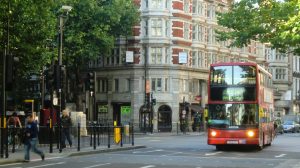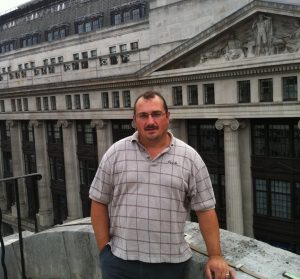By: Lee Badman, ITS information technology architect
Almost a decade ago, Information Technology Services (ITS) modernized the networking environment at Faraday House, Syracuse University’s campus in London. As one of the largest programs under the Syracuse University Abroad umbrella, Syracuse University London (SUL) was hampered at the time by a number of factors that Core Infrastructure Services director Andrew Joncas identified in a site visit:
- There was no connectivity back to what our London Orange brothers and sisters call “home campus.”
- The network was fairly antiquated, Internet connectivity was under-sized and local network support was both expensive and unimpressive.
- Students often had to leave Faraday House to find better networking for both academic and recreational pursuits.

About the only positive things that the network had going for it were fairly decent network wiring and excellent on-hand staff, including Marco Figueiredo, assistant director for IT & Operations at Syracuse University London.
Timing can be everything, and after the ITS site visit, a number of favorable factors lined up. British Telcom increased its available Internet connections while lowering subscription costs. A fairly new networking company called Meraki had just introduced a cloud-managed, easy-to-support product line that would prove to be a perfect fit at SUL. And ITS senior leadership was willing to take a chance on the new Meraki paradigm to extend the Syracuse University network “across the pond” to London.
Working with the rest of Network Design and Development (NDD) and Joncas’s Active Directory team, I traveled to London for three long days of working with Marco to overhaul the network. It was a fairly ambitious outing as Marco and I had to meet for the first time, purchase some basic tools and map out the wiring in the two buildings that make up Faraday House.

Three days later, 35 wireless access points and a couple of hundred wired workstations were in service. The same AirOrangeX and wired desktop environments that we all use on home campus is present at Faraday House. The outing was an unqualified success, as detailed in this Meraki case study.
Since then, Syracuse University’s London campus has been just another highly reliable segment of the University’s overall networking domain. Trouble tickets have been almost at statistical zero. When there is something to figure out, Marco has the backing of all of ITS and the rest of the University’s computing resources. Together, we’ve been able to do a full life-cycle update to the original network project. The flexibility of the cloud-managed Meraki model allowed NDD to provide a plug-and-play paradigm for Marco and his team to modernize the network again in 2019, without requiring anyone from ITS to be on-site.
There is no learning curve whatsoever for students or University leaders who travel to Faraday House. Between Syracuse University students, faculty and staff, along with visitors from other schools around London, it’s not uncommon for Syracuse University London to serve as many as 1,000 daily network users between the LAN and WLAN, again with the same Active Directory and secure wireless experiences as home campus.
Although COVID-19 has also forced changes at the Syracuse University London campus, the long-distance partnership remains strong as we all adapt and plan for whatever comes next.
